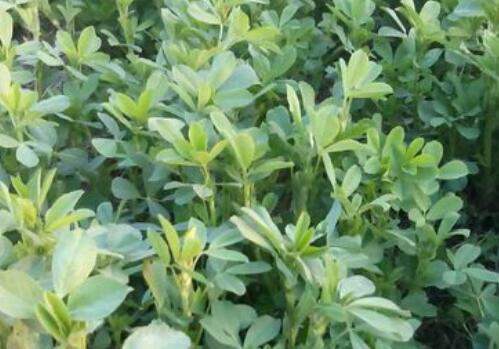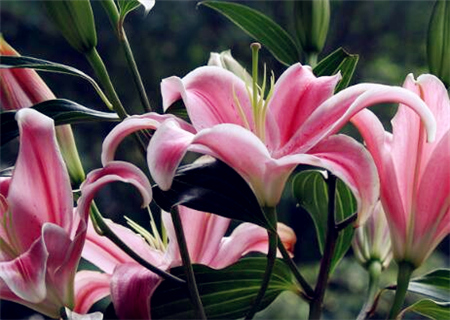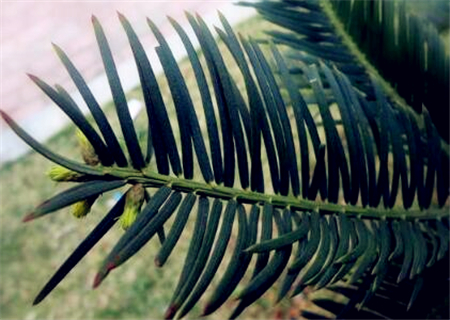How much is the current price of alfalfa per ton? What are the key points of planting and utilization technology?
Alfalfa, also known as alfalfa, pastoral, alfalfa, road steaming, seeds oval, 1-2.5 mm long, smooth, yellow or brown. The flowering period is from May to July and the fruiting period is from June to August. How much is the current price of alfalfa per ton? What are the key points of planting and utilization techniques? It is learned from Zhengzhou forage planting base that dry alfalfa is 1000-1500 yuan per ton, dry forage grass and sweet elephant grass are 2000-3000 yuan per ton.

Prospects and benefits of alfalfa planting:
Planting alfalfa has a hay yield of 1500 kg per mu, an output value of 950yuan, a production cost of 270yuan per mu, a harvest cost of 60yuan and a net income of 620yuan per mu, while sowing wheat in the same period has a yield of 396kg per mu, an output value of 356kg, a production cost of 208yuan per mu, and a net income of 128yuan per mu. According to the comparison of annual production, the yield of wheat and corn per mu is 450 kg and 400 kg respectively, the total output value is 725 yuan, the production cost is 535 yuan, and the net income per mu is only 190 yuan. Even if the output value of wheat straw and corn straw is 150 yuan, the net income per mu is only 340 yuan, which is still not as high as that of planting alfalfa. The benefit of forage feeding livestock and poultry varies with different livestock breeds, but it is definitely longer than the industrial chain of single grain and has greater value-added potential. Compared with planting corn, wheat and other crops, alfalfa has the advantages of simple tillage management, labor saving, less investment, long harvest period and good planting benefit.
Technical points of planting and utilization of alfalfa:
Alfalfa is a perennial legume with good palatability and high nutritional value. it is a high-quality forage for feeding herbivorous livestock such as cattle and sheep. The following is a brief introduction to the main points of planting techniques of the forage grass:
I. planting techniques
1. Site selection: select plots with deep soil, loose soil and not easy to accumulate water. Try not to choose plots where legume crops have been planted in the previous crop, or plots where the soil is acidic (such as loose soil) to grow alfalfa.
2. Land preparation: the plot is ploughed 25cm to 30cm. For those with deep root, tuber, tuber and rhizome weeds, ploughing should be carried out under fine weather conditions. 15 days before the soil ploughing, choose to use a sprayer to spray herbicides to remove impurities when the weather is clear and in direct sunlight. After ploughing, due to the sun exposure, one is to break the hardened soil properly, and the other is conducive to drying the roots and stems of most weeds, which is equivalent to a physical weed removal process.
3. Base fertilizer: before sowing, combined with land ploughing and applying sufficient base fertilizer, farm manure and nitrogen fertilizer can be used. The application rate of farm manure is 1000-1500 kg / mu. If there is no organic fertilizer, apply urea 5kg / mu and calcium superphosphate 30kg / mu. Ploughing and soil preparation after fertilization is required to make soil moisture in time, which requires that the soil moisture surface is flat without large soil clods.
4. Seed treatment: the seeds were cleaned and cool for 2 days before sowing, and then coated or inoculated with rhizobium. When inoculating rhizobia, 10 kilograms of seeds were mixed with each kilogram of rhizobium. If it is a coated seed, sow the seed directly.
5. Sowing: the sowing date should be from April to August, the lowest soil temperature is more than 5 ℃, and the soil water content is generally 18% to 23%.
Sowing rate: 0.5 kilograms per mu, sowing plus 20% sowing rate.
Sowing depth: depending on the soil moisture, generally 3-5 cm, the soil water condition is better and should be shallow, and the soil water condition should be deep.
Sowing method: ① narrow row strip sowing, row spacing 15 cm 20 cm, rake suppression after sowing; ② sowing should level the land, evenly sow seeds, rake cover soil to suppress, seed depth 3 cm 5 cm; ③ plastic film planting, according to 30 cm ridge spacing, ridge width 50 cm 60 cm, ridge height 5 cm, with a width of 70 cm plastic film covering, broken film planting, pond spacing 10 cm 20 cm.
II. Field management and utilization
1. Shallow rake to loosen the soil: after the soil is thawed in early spring, before the alfalfa germinates, the soil is loosened by shallow rake to increase the ground temperature and benefit to turn green. 2. Weeding: weeding once when the seedling height of alfalfa reaches 5 cm and 10 cm respectively. 3. Fertilization: before loosening the soil and irrigation, apply 20,30kg calcium superphosphate per mu. During the growing period, 0.5 kg of potassium dihydrogen phosphate was sprayed with 75 kg of water per mu. 4. Irrigation: where there are irrigation conditions, irrigation can be carried out once when turning green in spring and after each cutting. 5. Cutting times: the annual cutting times of alfalfa is 2Mu5 times. In general, there are more cutting times with better hydrothermal conditions, longer frost-free period and higher management level. 6. Stubble height: the general cutting stubble height is 8 Mel 10 cm. If the cutting times are more than 4 times, the stubble retention is higher, and the cutting times is less than 4 times, the stubble height can be reduced appropriately. However, in the last cutting in autumn, the stubble height should be kept above 10 cm. 7. The last cutting time: the last cutting time each year is determined when the temperature is reduced to 5. The time limit for C shall not be less than 20 days. Otherwise, it will affect the safe overwintering and next year's production capacity of alfalfa.
III. Disease prevention and control
The main diseases of alfalfa are downy mildew, rust, leaf spot and so on. Control methods: sowing disease-free seeds; timely cutting and use of diseased alfalfa; scientific fertilization, not excessive application of nitrogen fertilizer; once the disease is found, choose 70% methyl topiramate wettable powder 0.1 kg and 50 kg water spray once.
The main pests of alfalfa are aphids, alfalfa bug bugs, alfalfa armyworm, thrips and so on. Control methods: remove weeds and reduce insect sources; cut at the right time; when insect pests occur, 50% phoxim EC can be sprayed with 50 kg water per mu, with a safe interval of 30 days.
Safety interval: refers to the number of days allowed between the last application and harvest or feeding. Whether it is insecticidal or bactericidal drugs, the safety interval must be guaranteed in 30 days.
Time: 2019-03-15 Click:
- Prev

How to keep perfume lilies? When is the best time to plant? How many times a year do you bloom? (attached hydroponics method)
Perfume lily, also known as Casablanca, also known as the sky lily, it is also a kind of lily. The flower words of perfume lilies are great love, so many people love perfume lilies very much. So how to keep perfume lilies? When is the best time to plant? How many times a year do you bloom?
- Next

The wild plant Cephalotaxus chinensis costs 120000 US dollars per jin. How do farmers grow it? When will it be ready to plant? Different from the yew.
At a time when there are no more special treatments for cancer, Cephalotaxus is even more precious, with a price of US $240000 per kilogram on the international market. So how do farmers grow it? When will it be ready to plant? What's the difference between yew and yew?
Related
- Fuxing push coffee new agricultural production and marketing class: lack of small-scale processing plants
- Jujube rice field leisure farm deep ploughing Yilan for five years to create a space for organic food and play
- Nongyu Farm-A trial of organic papaya for brave women with advanced technology
- Four points for attention in the prevention and control of diseases and insect pests of edible fungi
- How to add nutrient solution to Edible Fungi
- Is there any good way to control edible fungus mites?
- Open Inoculation Technology of Edible Fungi
- Is there any clever way to use fertilizer for edible fungus in winter?
- What agents are used to kill the pathogens of edible fungi in the mushroom shed?
- Rapid drying of Edible Fungi

